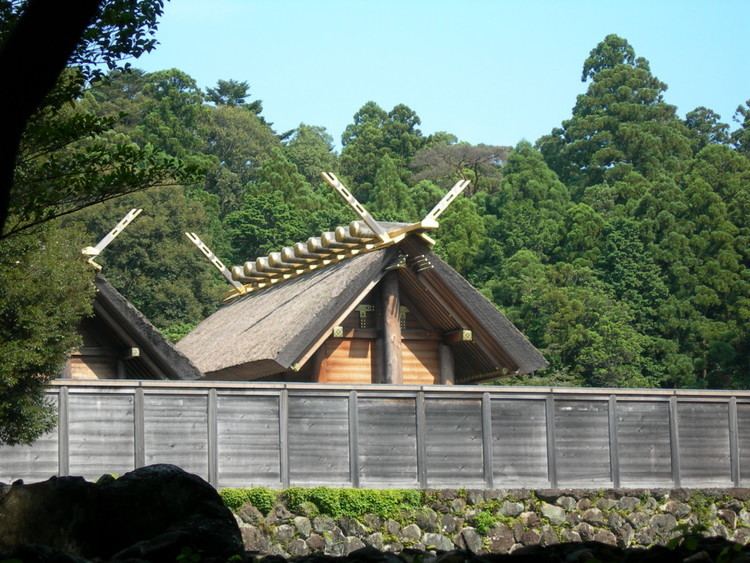Jōkyō (貞享) was a Japanese era name (年号, nengō, "year name") after Tenna and before Genroku. This period spanned the years from February 1684 through September 1688. The reigning emperors were Reigen-tennō (霊元天皇) and Higashiyama-tennō (東山天皇).
1684 Jōkyō gannen (貞享元年): The new era of Jōkyō (meaning "Taking Righteousness") was created to mark the start of a new cycle of the Chinese zodiac. The previous era ended and the new one commenced in Tenna 4, on the 21st day of the 2nd month.Subsequently, the power to create a calendar shifted to the shogunate and the authority of the Imperial calendar was diminished after 1684. In that year, the astrology bureau of the Tokugawa bakufu created a "Japanese" calendar which was independent of Chinese almanacs.
1684 (Jōkyō 1): A fire burned the Kyoto Imperial Palace to ashes. The reconstruction took a year.1684 (Jōkyō 1): Having met with success in Osaka's kabuki theater, Chikamatsu Monzaemon began to write plays for the kabuki audience in Heian-kyō. In part, his success stemmed from the way his work would sometimes mirror current happenings and contemporary urban characters.March 26, 1685 (Jōkyō 2, 22nd day of the 2nd month): The former Emperor Go-Sai died. A large comet appeared in the night sky.April 13, 1686 (Jōkyō 3, 21st day of the 3rd month): Emperor Reigen abdicated in favor of his son, who become Emperor Higashiyama. After abdication, Reigen's new home was called the Sentō-gosho (The Palace for an Ex-Emperor). The Jōkyō Uprising occurred in October.December 20, 1687 (Jōkyō 4, 16th day of the 11th month): The esoteric Daijō-sai ceremony, having been in abeyance since the time of Emperor Go-Kashiwabara—for nine reigns—was revived because of the bakufu's insistence. This Shinto ritual is performed only once by each emperor during the enthronement ceremonies. 
